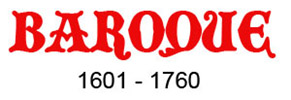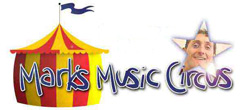
During the Baroque period, the foundations were laid for the following 300 or so years of musical expression: the idea of the modern orchestra was born, along with opera (including the overture, prelude, aria, recitative and chorus), the concerto, sonata, and modern cantata. The rather soft-grained viol string family of the Renaissance was gradually replaced by the bolder violin, viola and cello, the harpsichord was invented, and important advances were made in all instrumental groups.
Until about 1700, the old modes still exerted themselves from time to time by colouring certain melodic lines or chord progressions, but from the beginning of the 18th century the modern harmonic system based upon the major and minor scales was effectively pan-European. Choral music no longer dominated, and as composers turned more and more to writing idiomatic instrumental works for ensembles of increasing colour and variety, so 'classical' music (as opposed to 'popular') gradually began to work its way into the very fabric of society, being played outdoors at dinner parties or special functions (e.g. Handel's Water Music), or as a spectacle in the form of opera. On a purely domestic level, every wealthy lady would have a spinet to play, and at meal-times the large and rich houses would employ musicians to play what was popularly called Tafelmusik in Germany, of which Telemann was perhaps the most famous composer.
Of the many 17th century composers who paved the way for this popular explosion of 'classical' music, the following were outstanding: Monteverdi, Corelli, Alessandro Scarlatti, Schutz, Buxtehude, Purcell and Lully. Yet, the most popular composers of the period, indeed those who seem to define by their very names the sound of Baroque music at its most colourful and sophisticated are Johann Sebastian Bach, Handel, Telemann, Rameau, François Couperin, Domenico Scarlatti, and Vivaldi, all of them at their creative peak during the first half of the 18th century.
|
|
 |
 |
 |
|
|
|
Please address any comments concerning this page to The Music Maestro Mark Chard BSc, PLY |
Page created: 20th November 2011 Last edited: 20th October 2016 |